We hope everyone is enjoying our start to the fall – finally some cooler weather. Also, go Padres!
As expected, the Federal Reserve lowered interest rates this month by .50%. There was some uncertainty of the market reaction as there were even odds on a cut between .25% and .50%. Also, some analysts felt that a rate cut of .50% might be interpreted as a panic move – a sign the Fed sees more weakness in the economy not previously seen.
Thankfully, the cut was interpreted positively and we’re back to all-time highs again for the Dow and S&P 500.

We talked a little last month about the potential outcomes for the stock market using prior rate cutting cycles. For a little more perspective on all asset classes, you can see in the in the chart below that performance has been good for investors across the board. Here are the one-year average forward returns for stocks, bonds, and alternatives following the first Fed rate cut from prior cycles in history.

Combining a mix of lower interest rates and stronger-than-expected economic data like we got this month, you have to feel good about the setup for investors. US GDP held at 3% last quarter and the number of Americans filing for unemployment fell to a four month low.
Since we haven’t seen rate cuts in a decent economy in a while, it might be helpful to look at some different considerations for those of us that want to a) generate as much income as they can for their cash and b) those that want to take advantage of lower rates to borrow. Rate cuts are not uniform across the board.
You’ll see in the chart below, rate cuts will impact shorter term rates directly (FFR, or Fed Funds Rate). This will cause yields of savings accounts and money markets to decrease in line with the cuts. Those of us that want to lock in higher rates are going to need to get creative to keep those higher yields. That means moving out of cash and investing in the 2-5 year time frame as rates are a little less sensitive to cuts (things like US Treasuries, Short Term Corporate Bonds, etc.).
 For those that want to borrow money to buy a home or refinance a loan, the effects of rate cuts aren’t quite so linear. That’s because longer term interest rates are more of a reflection of future growth and inflation expectations, not necessarily what the Fed is doing.
For those that want to borrow money to buy a home or refinance a loan, the effects of rate cuts aren’t quite so linear. That’s because longer term interest rates are more of a reflection of future growth and inflation expectations, not necessarily what the Fed is doing.
If you want to wait until rates drop to 5% or even 4% or lower to take out a loan like we saw around 2020, there’s a strong chance you won’t like it if it happens. Why?
You might need a major deterioration in the overall economy to get there from here. You can see 2 different cutting cycles in the chart below – one right before a recession and one into a growing economy.
When thinking about how to position portfolios during a cutting cycle, it’s more important to consider why the Fed is acting than the precise timing of the rate cuts. Are they cutting rates because of positive things like steady disinflation? Or are they cutting due to negative factors like a feared sharp drop in economic growth and job losses?
The economic backdrop matters a lot: in past cutting cycles, the 10 year treasury rate has dropped meaningfully following the first rate cut…if the economy tips into recession. When the Fed cuts in a “no recession” scenario, however, the 10 year treasury rate has stayed roughly flat.

You can see in both scenarios the 10 year treasury yield dropped right after the first rate cut. It took a recession (the red line) to cause rates to drop further. Blackrock doesn’t think we’re there now.
We’re not seeing a large increase in job losses. Nearly half the increase in the unemployment rate is due to new job seekers, and unemployment filings are nowhere near the levels we’ve seen in prior episodes.
We may be headed for a “no hire, no fire” economy, but our base case is that the US is not on the brink of a recession, and that this will be a ‘good news’ cutting cycle.
To that point, from the time the Fed cut rates until the time of this writing, longer term interest rates actually went up after all the good economic data was released.
 The path of interest rates isn’t certain, but, perhaps strangely, we might enter a world where the Fed is cutting short term rates while longer term rates stay the same or even go up as the economy continues to grow. Stay tuned.
The path of interest rates isn’t certain, but, perhaps strangely, we might enter a world where the Fed is cutting short term rates while longer term rates stay the same or even go up as the economy continues to grow. Stay tuned.



